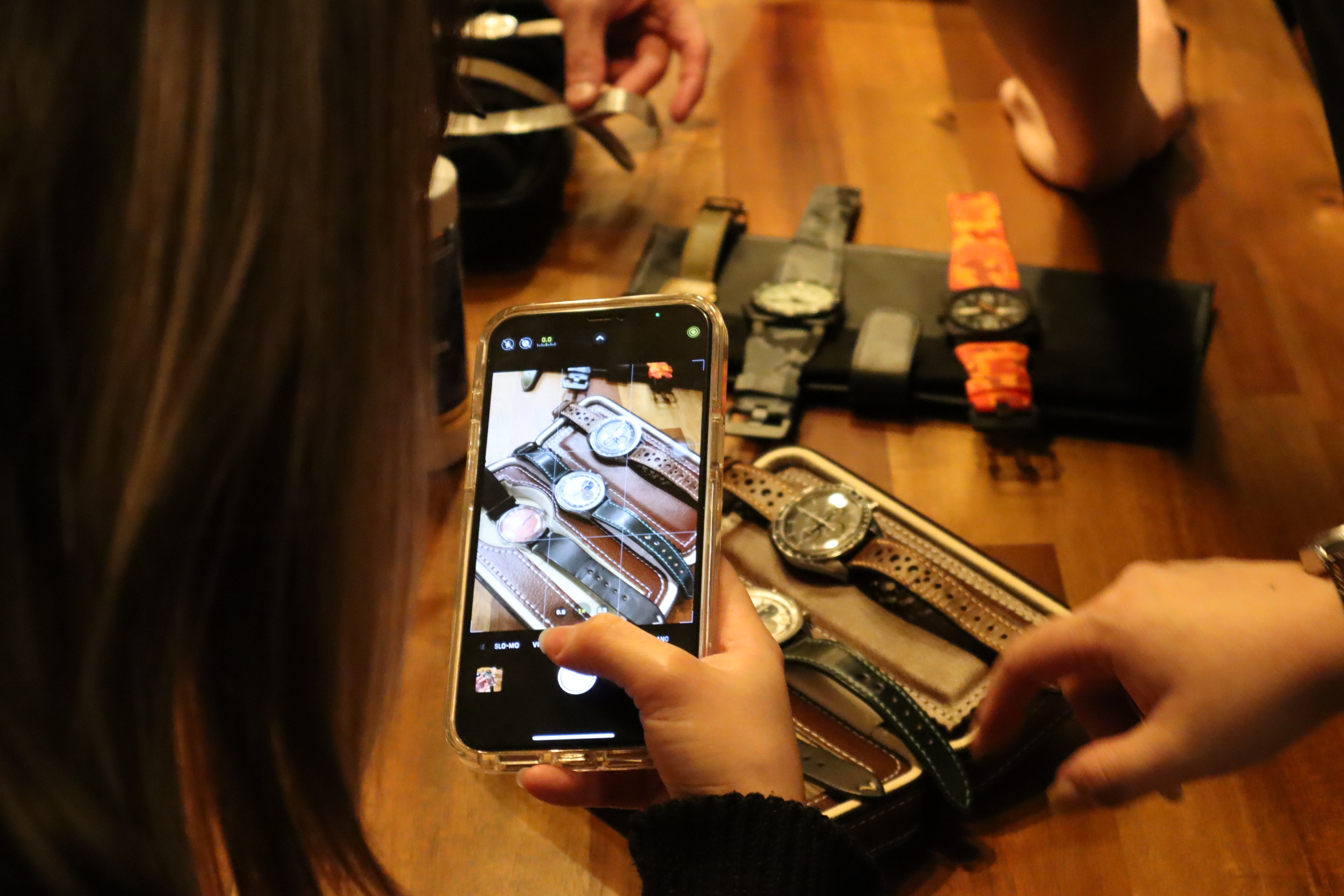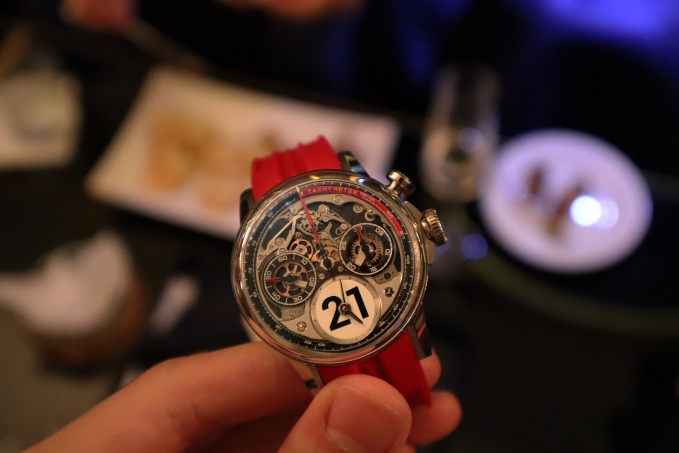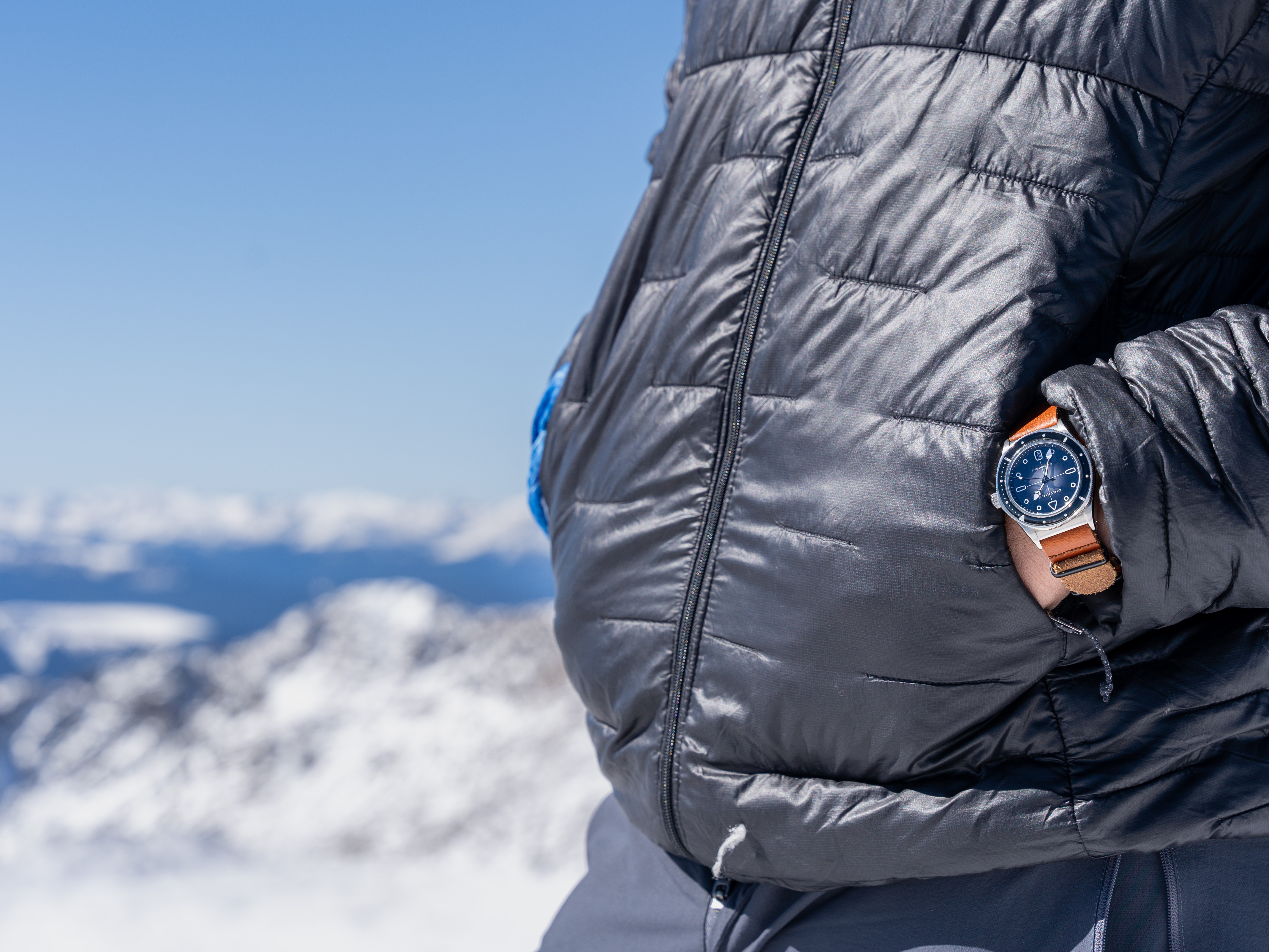Frank (@frendymgee)
Introduction
A few weeks back I had the immense joy and privilege to splash a few times in the great deep blue. After more than a year departed from my last big dive trip, returning to the ocean was nothing short of spectacular. What made this all the more special was the opportunity to take what is possibly the best modern interpretation of a vintage diver on the market, the Lorier Neptune. The Neptune comes in at $499, a great price point, in what is becoming an increasingly competitive market for sub-$1,000 divers. Although the space is definitely crowded with options, there are few other modern watches that are as faithfully vintage as the Lorier. The 39mm diver is a joy on wrist and reminiscent of great skin divers from the 60s. On Loriers’ site, they are very transparent on the types of watches they drew inspiration from. There is a fine line between pulling inspiration to create something unique and creating an homage. The Neptune walks this line perfectly, I can easily make comparisons to a number of different watches but I never think “oh, this is clearly just a copy of XXX watch”. The variant I was fortunate enough to have on loan is the gilt dial; gilt, on a no date diver absolutely drips cool, possibly an all time favorite combination.
Specifications
- Case Size: 39mm case width
- Case Thickness: 10.3mm case thickness + 2.4mm dome crystal
- Lug to Lug: 47mm case length / lug-to-lug
- Lug Width: 20mm lug width tapers to 16mm at clasp
- Bracelet: 316L marine-grade stainless steel, fits up to 8-inch wrists, button clasp with 3 microadjustment slots
- Movement: Miyota 90S5 automatic movement (no-date), 28800 bph
- Case Material: 316L marine-grade stainless steel case
- Water Resistance: 200 meters / 660 feet, screwn-down crown
- Bezel: 120-click unidirectional bezel
- Crystal: Dome plexiglass crystal
- Lume: Swiss Superluminova BGW9 luminous
- Included extras: Microsuede travel pouch, screwdriver for resizing bracelet
Crown / Case Side Profile
The Neptune encapsulates a ton of vintage styling in a modern package. One of these elements is the oversized crown with the Lorier logo embossed on the side.
The over-sizing of the crown makes it a joy to use and is accentuated by the lack of pesky crown guards. The lugs are long and sharp, protruding from the case. They curve downwards subtly to match the shape of your wrist, not compromising on comfort while maintaining this classic vintage aesthetic. Without question, the star of the show is the plexiglass crystal. Although plexi has long been loved for the warmth and clarity it brings to watch aesthetics, it comes with the certainty of scratches. With time, the plexi will bear the scars of day to day life, even more so when taken out in the field. Without further ado, let’s talk about the Neptune underwater.
Relevance of Dive Watches today
Dive watches originated in the mid 20th century and grew alongside the popularization of recreational diving. For those unaware, the bezel on your dive watch was used to measure elapsed time during diving. This helped avoid the dreaded “bends” or decompression sickness. Modern divers are equipped with a dive computer, these devices track your elapsed time the moment they are submerged, along with depth, temperature, and algorithmically computing your no-decompression times given your current dive profile. All that being said, does a classic mechanical watch still have a place on your wrist during a modern dive? Overwhelmingly, the answer is yes! Aside from just the awesome nostalgia and joy it brings to glance down and see a mechanical watch on your wrist… you absolutely can have a need for a dive watch. For me, my mechanical watch is utilized for navigational purposes. Generally, divers doing guided dives with a dive master do not perform their own navigation and would therefore use the Lorier as a backup dive timer in the event your computer fails or is inaccurate. However, for diving without a guide — a dive watch to measure elapsed time spent traveling in a particular direction is a must. The Lorier was perfectly suited for this purpose, the simplicity of this vintage diver makes the legibility clear as day while doing complex dive patterns around the reefs, or through submerged lava tubes in my case.
Case Thickness / Movement
The thickness of the Neptune at 10.3mm + 2.4mm crystal allows a sleek profile that does not get in the way. The thickness was reduced from the series II to III when Lorier switched to the Miyota 90S5 no-date movement. This no-date movement doesn’t have a phantom date when pulling out the crown to set the time which is definitely a nice touch, and I love the commitment to a no-date model from Lorier. When diving you have a tremendous amount of added thickness from the wetsuit, and as pictured above, a NATO. The added gear is roughly 6mm in total, so a chunky 15mm-thick building of a dive watch would now be 21mm! Yeah, it has to be 15mm thick to get 1000m of water resistance, but for recreational diving… I’d much prefer the thinner profile of the Neptune and the more than sufficient 200m of water resistance. Even with the added thickness, the Neptune comes in at about 18.7mm thick, saving the watch from added beating and keeping it out of the way unless needed.
Bezel
The most important feature of a dive watch other than being water resistant is the bezel. Lorier opted for a thin coin-edge finished bezel with an aluminum insert. Above water the bezel is firm with very little play in either direction, it is aligned properly and is no issue to turn. In the water, the bezel is a breeze to turn with or without gloves on the first dive of the day. I specified the first dive because after time spent in salt water, crystallized salt will work its way into the bezel mechanism and make turning the bezel extremely difficult. This happens with most watches, and is nothing an overnight soak in fresh water won’t solve. However, if you have three dives planned for the day it is definitely a draw back. There are a number of solutions to this issue, one would be increasing the bezel thickness/diameter. Currently on the Neptune III the bezel diameter is slightly less than the diameter of the case, if that were reversed the bezel would be much easier to grasp. Thickening the bezel would have the same effect. An alternative that would pair phenomenally with the vintage styling is a notch in the bezel for the wearer to easily pop off the bezel between dives for cleaning. A notch like this was provided on a few old divers for this exact purpose. Somewhere along the way companies stopped doing this, no fault of Lorier in particular, and I am not sure if any modern diver has this feature. By adding a notch you would be able to solve all issues pertaining to salt buildup while maintaining the same proportions.
Lume
You can’t talk about a dive watch without talking about lume. Lume was originally for visibility at night, or in deep water with low light. Naturally, I HAD to take the Neptune on a night dive to see how the lume stacked up!
The first image below was from that night dive done in Kona, HI. In Kona, divers come with baskets filled with multiple 10,000+ lumen torches that illuminate the dark water. This late night illumination causes plankton to amass in this location every night of the week. Kona is home to a fleet of Manta Rays that have come to know this location for the night buffet of plankton and will swoop in mercilessly consuming the illuminated plankton. Truly, a grand spectacle for any diver. In the dark ocean a quick charge with your torch will allow you to see the luminescent markers, hands on the dial, and triangular pip of the Neptune’s bezel. The blue lume seemed to fade fairly quickly, and I found myself needing to charge it frequently, and the pip glows slightly less intensely than the hands. The pip is one of the few small gripes I had with the Neptune, it seemed slightly too small, and is not raised. I would like to see a circular pip protruding from the triangle indices. This would mesh well with the vintage look, however, it is purely a personal preference. I would give the lume a B grade for intensity and visibility during the night dive, that being said, the lack of intensity did not have any adverse impact on the experience or dive. Honestly, vintage divers never glowed with the intensity of modern divers, so comparing the Neptune to a Seiko Monster or something isn’t really fair. The Neptune is not trying to be the brightest watch out there, it is instead an incredible modern production of a vintage vision and the lume matches that perfectly. A torch would be a little out of place.
Dial
Besides, a small amount of light from your torch allows you to get a glimpse of that gilty goodness, so I did not mind recharging it. The third image above is my fiancée wearing the Neptune during the night dive. Her patience for me to position and photograph watches underwater is incredible. It does help that she was enamored with the Neptune from the moment the watch came in. The sizing and style appealed to her, the Neptune firmly resides in an area where anyone will be able to wear it with comfort.
Bracelet
The bracelet is a flat link tapering stainless steel with a folding clasp and push button unlocking mechanism. The clasp may be the one area that is a massive departure from a vintage watch.
Prior to the 2000’s clasps and bracelets were exceedingly light weight and flimsy, typically being stamped of thin gauge metal for the clasp and accompanied by hollowed end links at the case. The bracelet may look vintage with the flat link style and taper but it is completely modern in construction. This is a welcomed improvement for sure. The clasp does not allow for extension over a wetsuit unfortunately so it did not come along with me underwater. I/my fiancée wore a myriad of straps from nato styled, barton silicone, and vintage tropic rubber straps (psstttt sponsor us, strap daddies). Stainless steel bands are my preference for daily wear but while diving, the aforementioned combinations seemed much more appropriate.
Overall Experience
Finally, I’d like to touch on what the watch was actually like experientially. Traveling across time zones with this watch was a breeze due to the lack of date and large crown. I never felt as particular about setting the time as I did with other watches and found the lack of date to be an overall de-stresser. No longer was I confined to the structured day of the month or needlessly tracking exactly how many seconds my watch was off with a spreadsheet and the trusty NIST website (National Institute of Standards and Technology). Looking down at the simple time-only Neptune and seeing the small distortions around the edge of the dial from the plexi brought about a nostalgia I didn’t realize was in me. I haven’t owned many vintage watches, so this may just be from reading articles about the golden era of divers. A secret longing to have been one of those original cool guys getting in the water with a tank on my back as one of the firsts, a real pioneer and explorer. Diving with the Lorier Neptune made me feel like that. Putting a monetary value to a feeling is exceedingly difficult, but at $499, it feels like a bargain to be transported (at least mentally) to a completely different era in time. With all that said, we should talk about what 12 dives and a dozen hours underwater in the ocean does to that pristine plexi.
Closing Thoughts
In addition to the many sea urchins imbedded in our feet and lava rock scratches to our knees, the ocean demands sacrifice. In this case, after over 12 hours spent on scuba with a healthy amount of cave and lava tube exploring, the plexi on the Lorier shows a number of large nicks and scratches. This had absolutely zero effect on the watches ability to complete the task at hand but was a tell tale sign of the adventures it has been on. Should this have been my own watch, likely I would opt to not remove the scratches. They would remain on the crystal as a reminder of where the watch had been with me. No watch can really be a “vintage” until it has some miles on it. The pristine plexi was borderline odd along with the watch being perfectly clean of scratches when opening the packaging. Now, everything about it seems to flow together perfectly, finally complete in its design language.
For more info on the Lorier Neptune, check them out here.
For Team Matick,
Frank (@frendymgee)


















































































































